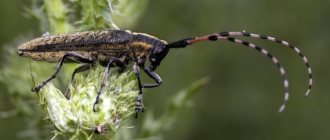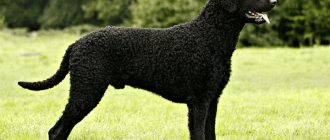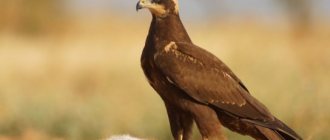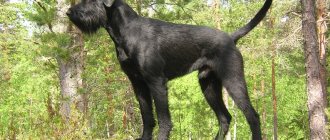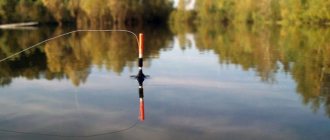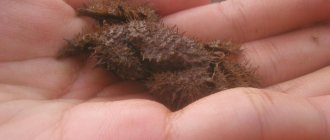- Wild animals
- >>
- Mammals
The otter is a whiskered member of the mustelid family. This is not only a fluffy and pleasant-looking animal, but also a tireless excellent swimmer, diver, intelligent predator, and a real fighter, ready to engage in battle with an ill-wisher. Water is the otter’s element, it is the thunderstorm of fish, crustaceans and mussels. The otter is quite popular on the Internet, this is explained not only by its attractive appearance, but also by its perky, playful disposition.
Origin of the species and description
Photo: Otter
The otter is a predatory mammal from the mustelidae family. In total, there are now 12 different species in the otter genus, although 13 are known. The Japanese species of these interesting animals has completely disappeared from our planet.
There are many varieties, but the most famous of them are:
- river otter (common);
- Brazilian otter (giant);
- sea otter (sea otter);
- Sumatran otter;
- Asian otter (clawless).
The river otter is the most common, we will look into its features later, but we will learn some characteristic features about each of the species presented above. A giant otter has settled in the Amazon River basin and simply loves the tropics. Together with its tail, its dimensions are equal to two meters, and such a predator weighs 20 kg. Its paws are powerful, clawed, and have dark-colored fur. Because of him, the number of otters has greatly decreased.
Sea otters, or sea otters, are also called sea beavers. Sea otters live in Kamchatka, North America, and the Aleutian Islands. They are very large, males weigh up to 35 kg. These animals are very smart and resourceful. They put the food they get in a special pocket located under the front left paw. To feast on shellfish, they crack their shells using stones. The sea otter is also under protection; now its numbers have increased slightly, but hunting it remains strictly prohibited.
Video: Otter
The Sumatran otter is a native of southeast Asia. She lives in mango forests, swampy areas, along the banks of mountain streams. A distinctive feature of this otter is its nose; it is as fluffy as the rest of its body. Otherwise, it looks like an ordinary otter. Its sizes are average. Weight is about 7 kg, length is a little more than one meter.
Interesting fact: Indonesia and Indochina are inhabited by the Asian otter. She loves to hang out in flooded rice fields. What distinguishes it from other types is its compactness. It grows to only 45 cm in length.
The claws on her paws are poorly formed, very small and the membranes are not developed. The characteristic differences between different types of otters depend on the environment where they live. Despite some differences, all otters have a certain similarity in many respects, which we will consider using the example of the common river otter.
Living in the sea
The sea otter's lifestyle is somewhat different from those living near fresh water bodies. Representatives of this species live mainly on the Pacific coast of South America and almost all of its subspecies (with the exception of the sea otter) are small in size: its weight ranges from 3 to 6 kilograms.
It is interesting that the sea otter avoids fresh water bodies and settles only on the sea coast. The animal makes its home on a rocky coast, where strong winds blow, and a section of the coast is constantly flooded with water during high tides (the hole is located on the border of the highest tide level).
Dense bushes or low trees usually grow along the shore - this gives her the opportunity to arrange two exits in her lair: one into the sea, the other onto land. Most species are characterized by a solitary lifestyle, so they set up their homes at a distance of at least two hundred meters from each other. True, they do not show aggression towards strangers who wander into their territory.
By its nature, the sea otter is very timid, and therefore it is not easy to see it, even though, unlike its river relative, it leads a diurnal lifestyle, staying in the water most of its time (without leaving the water, they turn over on their back and lay prey on the belly, even feed). When hunting, a sea otter can easily dive to a depth of about fifty meters (and does it very quickly - in 15-30 seconds).
The animal moves inland mainly when pursuing prey, and can move half a kilometer from the shore. The sea otter is very good at climbing the rocks located along the coast, and also really likes to rest in dense thickets.
Appearance and features
Photo: Animal otter
The river otter's body is elongated and has a streamlined shape. The length without a tail varies from half a meter to a meter. The tail itself can be from 25 to 50 cm. Average weight is 6 – 13 kg. This funny cutie otter has a slightly flattened, wide, whiskered muzzle. Ears and eyes are small and round. The otter's paws, like those of a noble swimmer, are powerful, short and have long claws and membranes. The tail is long and cone-shaped. She needs all this for swimming. The predator itself is quite graceful and flexible.
The otter has luxurious fur, which is why it often suffers from hunters. The color of the back is brown, and the belly is much lighter and has a silvery tint. The coat is coarser on top, and underneath there is a soft, densely padded and warm undercoat that does not allow water to reach the otter’s body, always warming it. Otters are neat and coquettes, they constantly take care of the condition of their fur coat, painstakingly cleaning it so that the fur is soft and fluffy, this allows them not to freeze in the cold, because muscular otters have practically no fat in their bodies. They shed in spring and summer.
Females and males of otters are very similar, they are distinguished only by their size. The male is slightly larger than the female. It is impossible to immediately determine with the naked eye who is in front of you - a male or a female? An interesting feature of these animals is the presence of special valves in the ears and nose, which block the entry of water when diving. The otter's vision is excellent, even underwater it can navigate perfectly. In general, these predators feel great both in water and on land.
Where does the otter live?
Photo: River otter
The otter can be found on any continent except Australia. They are semi-aquatic animals, so they prefer to settle near lakes, rivers, and swamps. Reservoirs may be different, but one thing remains unchanged - the purity of the water and its flow. An otter will not live in dirty water. In our country, the otter is widespread, it lives even in the Far North, Chukotka.
The territory occupied by an otter can extend for several kilometers (up to 20). The smallest habitats are usually along rivers and occupy about two kilometers. Larger areas are located near mountain streams. In males they are much longer than in females, and their intersection is often observed.
Interesting fact: The same otter usually has several houses in its territory where it spends time. These predators do not build their own homes. Otters settle in various crevices between stones, under the rhizomes of plants located along the reservoir.
These shelters usually have multiple exits for safety. Also, otters often use dwellings left by beavers, in which they live safely. The otter is very prudent and always has a home in reserve. It will come in handy in case her main shelter ends up in a flood zone.
Habitat
The animal populated all of Western Europe, and like a muskrat , it colonized vast territories of Asia, reaching the southern borders of Hindustan and China.
In its usual habitats, Sweden, Spain, Great Britain and Switzerland, the river otter, whose photos adorn various atlases of animals in these regions, was mercilessly exterminated.
Today, attempts are being made to resettle the animal in its native lakes and reservoirs of these countries, but for now it is on the list of endangered species.
In terms of landscape, the animal prefers rivers with fast flows and rocky bottoms. It is desirable that the river is not wide, within 10 - 15 m.
The total number of the species is approximately 90 thousand individuals, which is certainly a drop for the vast territory of the Earth.
Interesting! In the 18th century, when hunting was a widespread commercial activity, the otter population was 5 times greater than today.
As a member of the mustelid family, the river otter is a very cunning and masterly hunter. The main object for hunting is fish, which the animal catches up with at rapid speed.
What does an otter eat?
Photo: Little Otter
The main source of food for the otter, of course, is fish. These mustachioed predators love mollusks and all kinds of crustaceans. Otters do not disdain bird eggs and small birds; they also hunt small rodents. The otter will happily gobble up even a muskrat and a beaver if she is lucky enough to catch them. The otter can eat waterfowl, usually wounded ones.
An otter spends a huge period of life time trying to get food for itself. She is a restless hunter who can quickly chase prey in the water, covering up to 300 m. Having dived, the otter can do without air for as long as 2 minutes. When the otter is full, it can still continue its hunting, and will simply play and have fun with the caught fish.
In the fishing industry, the activities of otters are highly valued because they consume non-commercial fish, which can eat the eggs and fry of commercial fish. An otter consumes approximately a kilogram of fish per day. It is interesting that she eats small fish right in the water, placing them on her belly, as if on a table, and drags large ones to the shore, where she enjoys her meal.
Since this mustachioed fish lover is very clean, after a snack she spins in the water surface, cleaning her fur from fish remains. When winter comes to an end, an air gap usually forms between the ice and water, and the otter takes advantage of it, successfully moving under the ice and looking for fish for dinner.
It is worth noting that the metabolism of otters is simply enviable. It is so fast that the digestion and assimilation of the food eaten occurs very quickly, this whole process takes only an hour. This is explained by the high energy consumption of the animal, which hunts for a long time and spends a long time in cool (often icy) water, where heat does not stay in the animal’s body for a long time.
Nutrition
The otter is a semi-aquatic animal. Many river dwellers form a large part of its diet. The otter's food can be carp, roach, crucian carp, gobies and even small pike. Prefers small fish.
In winter, when there is not enough food, it eats frogs, crayfish, and all kinds of larvae. In addition to fish, it hunts water voles, ducks, waders, and small rodents.
Features of character and lifestyle
Photo: Otter
The semi-aquatic lifestyle of the otter has largely shaped its life and character. The otter is very attentive and careful. She has amazing hearing, sense of smell and excellent vision. Each species of otter lives differently. The common river otter prefers an isolated lifestyle; such a mustachioed predator likes to live alone, occupying its own territory, which it successfully manages.
These animals are very active and playful, constantly swim, can walk long distances, and also hunt actively. Despite his caution, the otter has a very cheerful disposition, possessing enthusiasm and charisma. In the summer, after swimming, they are not averse to warming up their bones in the sun, catching streams of warm rays. And in winter, they are no stranger to such a common children's pastime as skiing downhill. Otters love to frolic in this way, leaving a long trail on the snow surface.
It remains from their abdomen, which they use as ice. They also ride from steep banks in the summer, loudly splashing into the water after all the fun maneuvers. While riding on such attractions, otters squeal and whistle in a funny way. There is an assumption that they do this not only for fun, but also to clean their fur coat. An abundance of fish, clean and flowing water, impassable secluded places - this is the key to a happy habitat for any otter.
If there is enough food in the otter’s chosen territory, then it can successfully live there for a long time. The animal prefers to move along the same familiar paths. The otter is not strongly tied to a specific location. If food supplies become scarcer, the animal goes on a journey to find a more suitable habitat where there will be no problems with food. In this way, the otter can travel long distances. Even on an ice crust and deep snow, it can travel 18–20 km in a day.
It is necessary to add that otters usually go hunting at night, but not always. If the otter feels completely safe, does not see any threats, then it is active and energetic almost around the clock - such a fluffy and mustachioed, endless source of vitality and energy!
Factors negatively affecting numbers
The decrease in the population of the Caucasian otter in the 1960-1970s was influenced by the construction of pond systems, reservoirs, rice farms, etc. In mountainous and foothill areas, the reason for the decrease in the population is the destruction of forests, which, in turn, caused an increase in surface water flow and a decrease freshwater inhabitants (crayfish, fish, frogs, etc.), which are natural food for otters.
In addition, the reduction in the number of animals was influenced by the fact that many water bodies were polluted through toxic chemicals, pesticides, oil, etc. It should also be noted that the population is negatively affected by poaching.
In order to partially restore the population of Caucasian otters, it is necessary to create nurseries and resettle the animals across the lands. In addition, the fight against poaching should be significantly strengthened, as well as responsibility for illegal hunting of animals and trade in their fur should be strengthened.
Video
Social structure and reproduction
Photo: Animal otter
The interaction and communication of various species of otters have their own characteristics and differences. Sea otters, for example, live in groups where both males and females are present. And the Canadian otter prefers to form groups of only male individuals, entire bachelor squads numbering from 10 to 12 animals.
Fun fact: River otters are loners. Females, together with their broods, live in the same territory, but each female tries to allocate her own separate area on it. The male’s domain includes areas of a much larger area, where he lives completely alone until the mating season begins.
Pairs are formed for a short period of mating, then the male returns to his usual free life, taking absolutely no part in communicating with his children. The breeding season usually takes place in spring and early summer. The male judges the female’s readiness for approach by her specific smelling marks left behind. The body of otters is ready for reproduction at two (in females) and three (in males) years of life. To win the lady of their heart, cavalier otters often engage in tireless fights
The female carries the cubs for two months. Up to 4 babies can be born, but usually there are only 2. The otter mother is very caring and raises her babies until they are one year old. Babies are born already in a fur coat, but they see absolutely nothing, they weigh about 100 g. After two weeks they begin to see clearly and their first attempts begin.
Closer to two months, they are already starting swimming training. During this same period, their teeth grow, which means that they begin to eat food that is typical for them. All the same, they are still too small and exposed to various dangers; even at six months they stay close to their mother. A mother teaches her offspring to fish, because their lives depend on it. Only when babies turn one year old do they become fully strengthened and adults, ready to go free swimming.
Natural enemies of the otter
Photo: River otter
Otters lead a rather secretive lifestyle, trying to settle in impassable, secluded places away from human settlements. Still, these animals have plenty of enemies.
Depending on the type of animal and the territory of its settlement, these may be:
- crocodiles;
- jaguars;
- cougars;
- wolves;
- stray dogs;
- large birds of prey;
- the Bears;
- Human.
Usually all these ill-wishers attack young and inexperienced animals. Even a fox can pose a danger to an otter, although it often turns its attention to an otter that is wounded or caught in a trap. The otter is capable of very brave defense, especially when the life of its cubs is at stake. There are cases when she entered into a fight with an alligator and came out of it with success. An angry otter is very strong, brave, dexterous and resourceful.
Still, people pose the greatest danger to otters. And the point here is not only in hunting and the pursuit of luxurious fur, but also in human activity. By massively catching fish and polluting the environment, he thereby exterminates the otter, which is in danger of extinction.
Population and species status
Photo: Animal otter
It's no secret that the number of otters has declined catastrophically; their population is currently under threat. Although these animals live on almost all continents with the exception of Australia, everywhere the otter is under protected status and is listed in the Red Book. It is known that the Japanese species of these amazing animals completely disappeared from the face of the Earth back in 2012. The main reason for this depressing state of the population is humans. His hunting and economic activities endanger these mustachioed predators. Their valuable skins attract hunters, who have led to the destruction of huge numbers of animals. Poachers are especially fierce in winter.
Poor environmental conditions also affect otters. If water bodies are polluted, it means that fish disappear and the otter lacks food, which leads the animals to death. Many otters get caught in fishing nets and die when they become entangled in them. Recently, fishermen have been viciously exterminating the otter because it eats fish. In many countries, the common otter is now practically unheard of, although it used to be widespread there. These include Belgium, the Netherlands and Switzerland.
